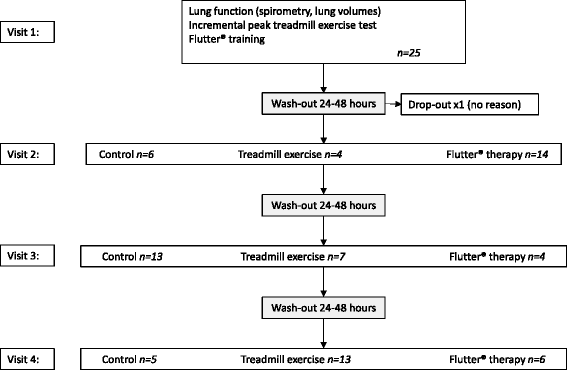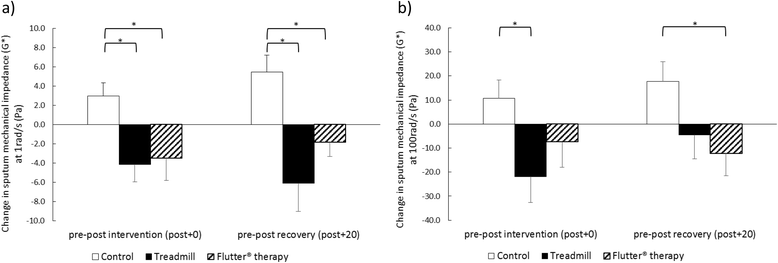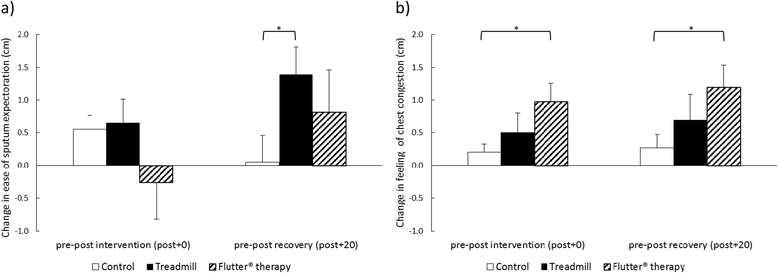Effects of treadmill exercise versus Flutter® on respiratory flow and sputum properties in adults with cystic fibrosis: a randomised, controlled, cross-over trial
- PMID: 28077104
- PMCID: PMC5225514
- DOI: 10.1186/s12890-016-0360-8
Effects of treadmill exercise versus Flutter® on respiratory flow and sputum properties in adults with cystic fibrosis: a randomised, controlled, cross-over trial
Abstract
Background: Treadmill exercise and airway clearance with the Flutter® device have previously been shown to improve mucus clearance mechanisms in people with cystic fibrosis (CF) but have not been compared. It is therefore not known if treadmill exercise is an adequate form of airway clearance that could replace established airway clearance techniques, such as the Flutter®. The aim of this study was to evaluate respiratory flow, sputum properties and subjective responses of treadmill exercise and Flutter® therapy, compared to resting breathing (control).
Methods: Twenty-four adults with mild to severe CF lung disease (FEV1 28-86% predicted) completed a three-day randomised, controlled, cross-over study. Interventions consisted of 20 min of resting breathing (control), treadmill exercise at 60% of the participant's peak oxygen consumption and Flutter® therapy. Respiratory flow was measured during the interventions. Sputum properties (solids content and mechanical impedance) and subjective responses (ease of expectoration and sense of chest congestion) were measured before, immediately after the interventions and after 20 min of recovery.
Results: Treadmill exercise and Flutter® resulted in similar significant increases in peak expiratory flow, but only Flutter® created an expiratory airflow bias (i.e. peak expiratory flow was at least 10% higher than peak inspiratory flow). Treadmill exercise and Flutter® therapy resulted in similar significant reductions in sputum mechanical impedance, but only treadmill exercise caused a transient increase in sputum hydration. Treadmill exercise improved ease of expectoration and Flutter® therapy improved subjective sense of chest congestion.
Conclusions: A single bout of treadmill exercise and Flutter® therapy were equally effective in augmenting mucus clearance mechanisms in adults with CF. Only longer term studies, however, will determine if exercise alone is an adequate form of airway clearance therapy that could replace other airway clearance techniques.
Trial registration: Australian and New Zealand Clinical Trials Registry, Registration number # ACTRN12609000168257 , Retrospectively registered (Date submitted to registry 26/2/2009, First participant enrolled 27/2/2009, Date registered 6/4/2009).
Keywords: Airway clearance; Cystic fibrosis; Exercise; Flutter®; Oscillating PEP; Physiotherapy; Sputum.
Figures





References
-
- Radtke T, et al. Physical exercise training for cystic fibrosis. Cochrane Database Syst Rev. 2015;6 - PubMed
Publication types
MeSH terms
Associated data
LinkOut - more resources
Full Text Sources
Other Literature Sources
Medical
Miscellaneous

